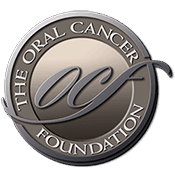OCF is sad to report the loss of Laura Ziskin to cancer. Ms. Ziskin was an accomplished producer, studio executive and activist / co founder of Stand Up 2 Cancer.
Source: Stand up to Cancer Acclaimed film producer and cancer activist Laura Ziskin died today at her home in Santa Monica at the age of 61. Ziskin, who lived with breast cancer for seven years, is survived by her husband, screenwriter Alvin Sargent, with whom she frequently collaborated; daughter, producer Julia Barry, and son-in-law, writer Eli Dansky. The family requests that donations be made to Stand Up To Cancer: (via http://su2c.org or by mail: Attn: Stand Up To Cancer, c/o The Entertainment Industry Foundation, 1201 West 5th Street., T-700, Los Angeles, CA, 90017.) Ziskin had a trail-blazing career as a producer and studio executive for 35 years. After her cancer diagnosis, Ziskin embraced an additional, unsought role as a cancer activist, joining with other women in the entertainment and media businesses (including Sherry Lansing, Katie Couric, Rusty Robertson, Sue Schwartz, Ellen Ziffren, Pam Williams, Noreen Fraser, and the Entertainment Industry Foundation's Lisa Paulsen and Kathleen Lobb) to co-found Stand Up To Cancer (SU2C). The group marshals the entertainment industry's resources to engage the public in supporting a new approach to cancer research geared toward getting new therapies to patients quickly. Earlier this year, Ziskin was awarded The Producers Guild of America's Visionary Award for her work as a film producer and her humanitarian efforts in the fight against cancer. Speaking of herself and the other SU2C co-founders, Ziskin said, "We realized we had the potential to make cancer the first-tier issue it needs to be and to impact how cancer [...]
